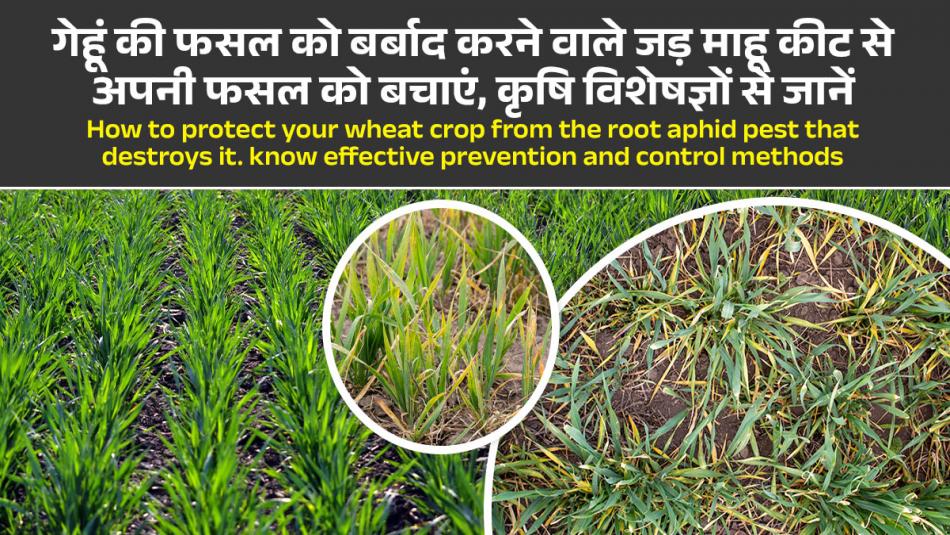
Wheat sowing is progressing rapidly across the country, At this stage, protecting wheat crops from root aphids and other diseases poses a significant challenge for farmers. Agricultural scientists have issued a special advisory regarding the increasing infestation of root aphids and yellowing of wheat crops. Failure to control these pests in time can lead to severe crop losses.
Root aphids are found in the roots of wheat plants, where they feed on sap, weakening the plants and causing yellowing and wilting.
Read More... Best wheat varieties for late sowing, Achieve bumper yields and great profits
Prevention Through Seed Treatment:
In areas where wheat sowing has not yet been done, seed treatment is essential.
In areas where sowing has been completed, and pest symptoms have appeared, the following insecticides should be sprayed:
Mixing Insecticides with Urea: Mix 250 ml of Thiamethoxam 30% pesticide with 50 kg of urea and apply per acre. This method is highly effective in pest control.
Other Important Suggestions:
Conclusion: To protect wheat crops from root aphids, accurate identification and timely use of insecticides are crucial. By following the measures suggested by agricultural scientists, farmers can safeguard their crops and enhance productivity. Regular crop monitoring and effective pest control methods are the best strategies to combat root aphids.
Read More... Wheat Variety CG 1040, A Game-Changer for Low-Water, High-Temperature Farming
Latest Update